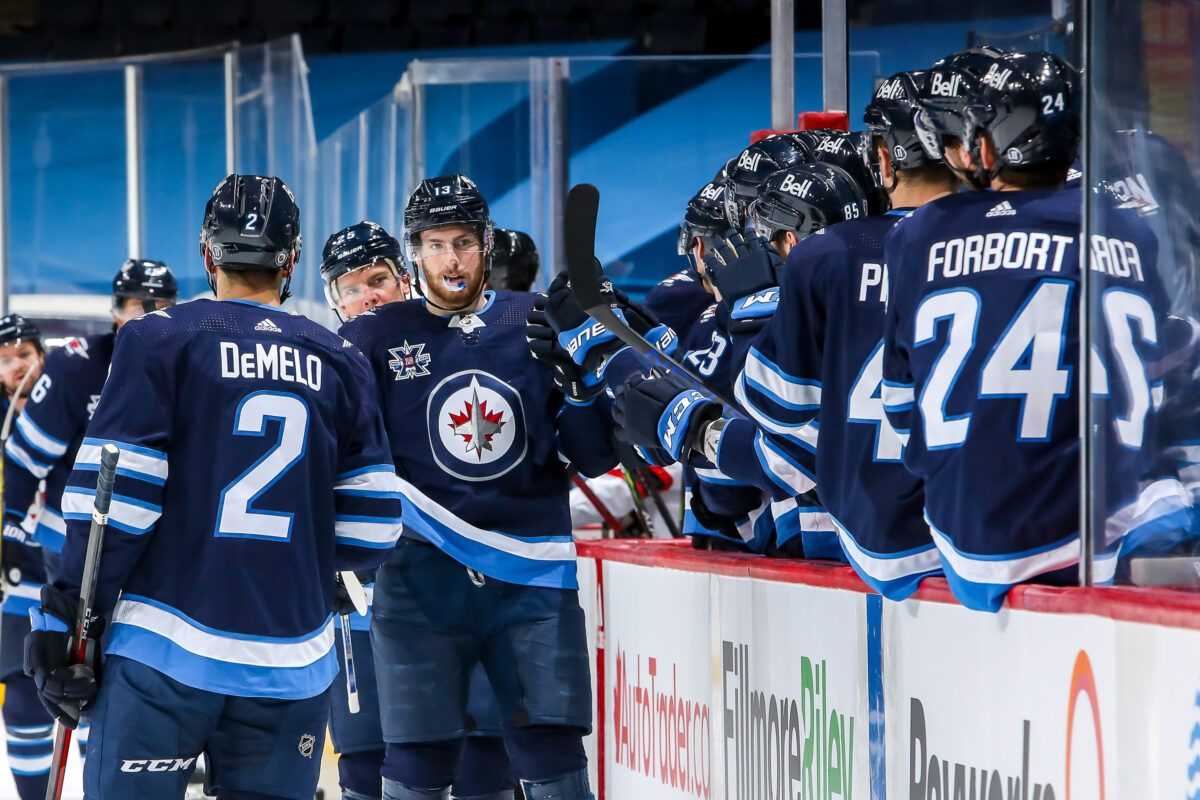The free-falling Winnipeg Jets have a planeload of problems right now, not the least of which is their poor performance on special teams.
Power Play Powerless
During the seven-game losing streak, the Jets have not had a lot of power play chances: a total of 13. But they’ve converted just once on those thirteen chances (7.6 per cent efficiency.)
Related: Jets’ Leadership Downplaying Problems, but Stastny’s Speaking Out
That’s abysmal, given the weapons they have at their disposal, and that the power play has been one of their points of strength through most of the season. In fact, they’re still ranked fourth in the NHL.

The power play was an ugly 0-6 in Monday’s 2-1 loss to the Ottawa Senators that extended the losing streak to the longest in Jets’ 2.0 history. On the first five of those power plays, the Senators’ aggressive penalty kill put a ton of pressure on Kyle Connor, Mark Scheifele, Blake Wheeler and company.
The = first power play unit (Scheifele, Connor, Wheeler, Paul Stastny, and Neal Pionk) had no answers for the Senators’ puck pursuit, and the second power play unit (Adam Lowry, Andrew Copp, Pierre-Luc Dubois, Mathieu Perreault, and Josh Morrissey) didn’t get much time to work at all.
The Senators even snagged a shorthanded goal on that first unit when Nick Paul’s dogged puck pursuit led to Connor Brown’s game-opening tally.
The power play has too often been a point of negative momentum, and fruitless opportunity after fruitless opportunity has just seemed to make the team even more frustrated.
The Athletic’s Murat Ates astutely pointed out the lack of chances the Jets generate from the middle of the ice — the “home plate” area where most goals are scored from. This extends to the man advantage, where most of the shots come from the point because the thread-the-needle passes from Wheeler on the right-side wall — and other plays that work the puck into the middle — simply don’t connect with any regularity anymore.
Only on their sixth and final power play of the night against the Senators did the Jets generate some good chances and they did just about everything but score. Perhaps they can take some positives out of that and use going forward to get back on track versus the Calgary Flames.
Penalty Kill Suddenly Struggling
During the losing streak, the Jets’ penalty kill is operating at just 70 per cent efficiency (14/20), and the six goals against have come at some of the worst times possible.
When the Jets had a chance to stop the losing streak at five — and seemed set to take a 3-2 lead into the second intermission against the Montreal Canadiens on April 30— the penalty kill had a key breakdown. None of Andrew Copp, Dylan DeMelo, or Derek Forbort could clear the puck out of the high slot and Joel Armia grabbed it and slid the game-tying goal through Connor Hellebuyck.

Trevor Lewis, Winnipeg Jets (Photo by Jonathan Kozub/NHLI via Getty Images) 
Andrew Copp, Winnipeg Jets (Amy Irvin / The Hockey Writers)
Armia’s goal came just 1:46 left in the frame. The Canadiens’ game-winning goal — another late-third-period soul-killer — came with the Canadiens on the power play as well. Copp was a split-second too slow on Nick Suzuki, and couldn’t get his stick on the young star’s shot from the top of the circle.
Like the power play, the Jets’ penalty kill hadn’t been a point of weakness prior to the losing streak. After a middling start, a strong stretch had them 12th-best in the league by April 21 — even after giving up two power play goals to the Oilers in a 3-0 loss April 17 that began the Jets’ meteoric fall from grace.
They’ve tumbled five spots since to 17th. Head coach Paul Maurice noted in mid-April the importance of having a stout penalty kill during the playoffs (which the Jets are still mathematically likely to make.)
“It’s the more important of the two (special teams regimes). Being able and being confident on the penalty kill in the playoffs is a critical piece to your game… having a structure,” he said. “We’re seeing some pretty powerful power plays (in the North Division). Edmonton is up there, Toronto is up there and they were certainly leading the league for an awfully long time. So, every time one of those power-play units gets on the ice, it’s dangerous.” (From ‘Stone Cold Penalty Killers, Winnipeg Free Press, April 21, 2021.)

The Jets will see either the Maple Leafs’ 13th-place or the Oilers’ second-place power play in the first round. (The Maple Leafs had a bad power play stretch last month, but they’re still dangerous.) The Jets are a fairly disciplined team at 7.4 PIMs per game taken, but will need to mind their Ps and Qs closely in the playoffs.
Like the power play, perhaps the Jets’ penalty killers can use their perfect 3/3 night against the Senators as a building block back to respectability.
The Numbers Don’t Add Up
It seems that every little breakdown — a fumbled puck at the blue line, a whiffed clearing attempt, a half-second too slow of a reaction — leads to a goal against or the sapping of momentum. Mentally, the Jets are fragile as a result.
In an ideal world, a team’s combined power play and penalty kill percentages should add up to 100: 20 per cent efficiency on the PP and 80 per cent efficiency on the PK. During the losing streak, the Jets’ combined percentage is just 76.69.
They have Lowry back on the penalty kill after he missed four games due to a neck injury. While obviously missing the speedy and creative Nikolaj Ehlers on the power play, they have enough firepower that there should be no excuse for letting opponents get away with undisciplined play. Connor, Dubois, Scheifele and Wheeler have all been invisible and need to remerge.

Their five-on-five play and lack of coaching creativity are other issues they must address, lest they make a third-straight early exit. But shoring up special teams would go a long way to helping the team grab a win or two before the regular season wraps up so they’re not feeling so low going into the postseason.